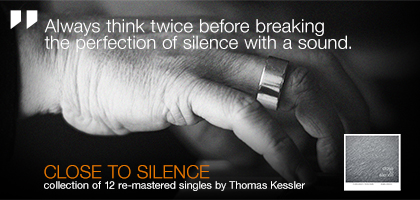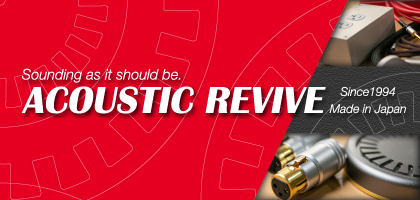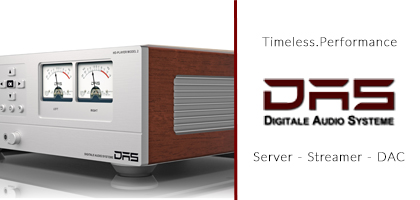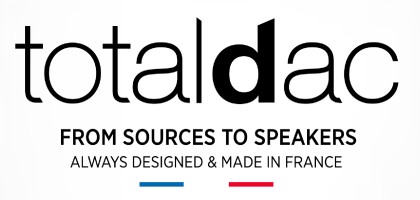AUDIO GEAR – A FEW WORDS OF WHAT MAKES US REALLY EXCITED

September is that month when we spend most money on school supplies - books, notebooks, pencils, pens, etc. Although some of these purchases take place in August, a large group of students doesn’t know before September which textbooks they will need during the school year. For students (but also for teachers) this month is "cursed" because it signifies a definite and inevitable end of summer vacation and the beginning of school - the place that hardly anyone likes.
Apart from historical connotations - World War II broke out in September (in Poland it took place on September 1) – it is the month when the traditional sales season begins; the best time of the year for audio retailers.
For four months, until Christmas, distributors, retailers (dealers), as well as manufacturers need to make a healthy profit to last them through the lean days of winter and early spring, when the sales slow down again. And while over the last few years that "sales season" began later and later and its start has become increasingly blurred (world economy crisis? change of habits?), for audio industry the season between September and December is still a special time. It is then that most AUDIO GEAR is being sold.
I have already written twice about audiophilism and related issues, in order to introduce our industry and what we do to all those who are just starting their audio adventure, in my articles titled Audiophile - a short introduction to the man (a few arguments for sense in the audiophile business), see HERE, where I gave an overall picture of an audiophile, and Auditioning - a short introduction to atypical behavior (or why listening is not always auditioning and what it means), see HERE, in which I looked closer at a situation or activity known as auditioning, which for an audiophile is an essential tool for studying, examining the sound. For more advanced, experienced (by life) audiophiles the articles were meant to be a kind of recapitulation of what they already know.
This time I would like to say a few words about what is necessary for auditioning – audio gear. I'll leave the second essential element - the recordings - for some other time. I would like to take a closer look at what are the basic components of the audio system, which are more and which are less important, and what are the general strategies for assembling the system. Oxford English Dictionary notes many various meanings of the word ‘system’. The very first meaning is “a set or assemblage of things connected, associated, or interdependent, so as to form a complex unity; a whole composed of parts in orderly arrangement according to some scheme or plan.” Another, more specific meaning of interest to us is “a group, set, or aggregate of things, natural or artificial, forming a connected or complex whole; artificial objects or appliances arranged or organized for some special purpose, as pulleys or other pieces of mechanism, columns or other details of architecture, canals, railway lines, telegraphs, etc.”
The system is thus a set of functionally related components, forming a whole, in which the sum is greater than the combined value of individual components. These components are no longer separate but become parts of what functions as a whole. Hence ‘system’ is a ‘functional whole’.
And that is what 'audio gear' means in the world of audio. It is a set of components and accessories, including – and often overlooked – the listening room, and the listener, that is used to reproduce sound. And because the 'audiophile' have been characterized in the first article as the one who “likes to listen”, who tries to listen to a recording in a way as close as possible to what happened during the registration or to what was registered (they are two different approaches to the same problem; we will surely come back to that in more detail some other time), his or her system must be arranged with the purpose of meeting that demand.

The popular name for the components of audio system, often used in our industry, is “gear”. To complete the definition of ‘audio system’ let’s quote again the Oxford Dictionary... which says that ‘gear’ means “a combination of (…) appliances for a given purpose.” In our case, for the purpose of listening. The audio system is made up of audio gear. The whole trick lies in following the right plan.
The classic stereo system consists of the following components:
∙ source
∙ amplifier
∙ speakers
∙ wiring.
These are four basic equally important components. Or at least so they seem. In fact, as many audio gear users, manufacturers, distributors, etc. that many opinions concerning components importance hierarchy.
The best known is the view of Ivor Tiefenbrun, the founder and CEO of Linn and the designer the Linn LP12Sondek turntable, for whom the most important is the source. It is understandable, after all the LP12, Linn’s biggest hit before the digital revolution, is the source. However, his view was also shared by others, such as Naim. According to that philosophy, if we send signal from a low quality source, the rest of the system will not be able to improve it. If something goes wrong right at the beginning, no matter how good the next components, they cannot fix the initial flaw. And there is something to it. Let’s add that Linn Products recently received the most prestigious corporate award in the U.K., The Queen's Awards for Enterprise and Innovation for the DS line of digital stream players (file or network players). Again, the source...
However, equally right may be those who claim that the most critical component of the audio system is the speakers. They argue that it is the most imperfect part of the system, introducing most distortion (several orders higher than the amplifier and even a dozen or so orders higher than the source!). It is the speakers that convert electrical energy into mechanical energy, which is the audio Achilles' heel.
To understand this point of view, just look at a typical loudspeaker. We have several speaker drivers, usually located at different points on the front panel, and an enclosure that supports their work. Signal to separate drivers is divided in a set of filters called a crossover. The drivers are fairly primitive in how they operate. Let's put it all together and it turns out that the speaker is made up of compromises. Even if you use coaxial speakers as KEF or Tannoy designs, or a single full range driver, you will only replace one problem with another. Yes, the speaker would be a good candidate for the “dark horse” of the audio system.
Except that - in my opinion – it is much more difficult to design and build another component of the audio system, the amplifier, and especially the preamplifier. For more information on how differently that component can sound I encourage you to read the reviews in the special issue of "High Fidelity" dedicated to preamplifiers (Pre, No. 99, July 2012, available under the Archive tab). Comparing the top preamps it is easy to come to the conclusion that while they all meet the basic requirements of the top high-end systems, each one sounds different and is better suited to a different system, or even to another listener. The changes that the preamp brings to the sound I recognize just as easily as those introduced by the sound source, however, the former are more critical for me, more significant.

And that brings us to a special moment of our discussion - to the point where we need to find an answer to the question of which component is most important – the source, the amplifier, the speakers, or maybe the wiring. Or maybe something else, such as listening room acoustics. If you have read carefully everything I wrote above, you should not be surprised with my short answer: it depends.
It mainly depends on us, the listener, the user of the system. For – the way I see it – each one of us develops own particular sensitivity to certain elements of sound. Some are more sensitive, some less; some may be sensitive to a greater number of sound elements, some to smaller, however, it all boils down to one thing: to us.
I guess hence the different opinions on the hierarchy of devices in the audio system. To recapitulate it somehow it might be reasonable to assume that each component is equally important, if it wasn’t for one thing – our definition of system says nothing about “balance”, but states that the components form a "whole". That changes everything and leads directly to the most important skill in audio, to the knowledge of how to combine, set up various components.
Not knowing anything about audio one could assume that all it takes is to buy the best components we can afford by dividing the money equally between them (at this stage, let’s exclude the listening room). Theoretically, we should get the best audio system in the given price category, right? Wrong, as it turns out; that's simply not true. We will almost certainly get properly sounding system, maybe even well sounding, but not optimal, and certainly not the best we can do.
Audio is an art combining, a knowledge of what sounds best with what, which components sound together in a synergistic, i.e. coherent way. There are no components or accessories independent of their environment – they are all electronic and electromechanical components, in which what precedes them and what follows have great importance.
That ability to set up various components may be narrowed down or limited to measuring their electrical properties. This is a good clue, because it’s worth knowing that the amplifier (preamp) input impedance should be ten times higher than the source output impedance and that you need to match the speakers with the amplifier in such way that the speakers impedance is located in the amplifier “comfortable zone”, where it has the lowest distortion and optimal energy transfer, and that speaker cables should be characterized by such set of the three basic parameters (resistance, capacitance, inductance - for simplicity I use the terms relating to DC) that they provide a proper load for the power amplifier output stage, etc. It's all true and a good a starting point.
However, even the best selected electrical parameters do not guarantee good sound. The chance that we will achieve something good, and sometimes something very good is much higher than the selection based on price, but it is still not what we look for in audio - and, let me remind you, we look for the best possible combination of individual components , not "good" or even "very good" but the "best possible".

How to do it? Actually, quite simple – you need to sit down and listen to the given setup. Then replace each of its components for a few others and see what has changed. If the new setup sounds better - the component that improved the sound stays in the system. It is of course possible that you will need to go back a step or two, and it might happen that the component that was all wrong in one setup will turn out to be great in another system, and form the basis on which you can build something even better. Careful listening, however, cannot be replaced by anything else.
|
It does not sound quite as simple as assembling an audio system based on the price of components or even on the basis of their electrical parameters, right? And the only way to succeed is to gain experience - nothing can replace it. You have to listen to a number of various combinations of different components - cheap and expensive, in different systems (expensive with budget-priced, two of equal price, etc.) in order to try to predict how a given component will sound and how it will sound together with others. And the best would be to develop a few combinations that always work, and build something more on that basis.
Looking at systems that were built in that way it is easy to notice what the preferences of their owners were. To illustrate this let's look at my reference system (where 'reference' is not ‘best existing' but 'a known reference point').
The most expensive component is the amplifier. It consists of the two-part (conditioner/power supply unit and amplification unit) Polaris III [Custom Version] preamplifier and the Soulution 710 power amplifier. Each one of them costs more (amplifier) or a little less (preamp) than the speakers and CD player together.
In the case of CD player (Ancient Audio Lektor AIR V-edition) the case is quite simple - it's a Polish device, from a small manufacturer in Kraków and thus costing much less than if it came from a well-known manufacturer. Even if it was sold by - say - Wadia and cost twice as much as it does it would still be twice cheaper than the amplifier. This is not the best CD player I know, but is the reference point for devices costing twice or even three times more (not to mention cheaper units). And it is very ergonomic - one, compact design with an adjustable output.
The speakers are a bit more difficult thing, though - in the end - we are dealing with a similar case. I’ll say it briefly: the Harbeth M40.1, which I use, if sold by someone else, based solely on their finish quality and their sound, would cost twice or even three times more. The business ethics of Alan Shaw, the owner and CEO Harbeth will not allow such thing - the speakers are priced so that covered the cost of development and manufacturing, dealers margins, and some profit. Just as many and so much.
Both my player and my speakers can work quite comfortably with many times more expensive amplifiers and be on an equal footing with them. And - from what I could figure out – it is similar with many, many other high-end sources and speakers.
In lower price ranges however it is not necessarily true. I will say more – up to around 10,000 PLN per unit it will be considerably better to combine a cheaper source and amplifier and with more expensive speakers. Such example system might look like this:
∙ Source: Blu-ray/computer/network player + Cambridge Audio DacMagic 100 D/A Converter
∙ Amplifier: Music Hall A15.2 or NAD C326 BEE,
∙ Speakers: Castle Knight 4, and even Castle Stirling 3 or Spendor A3.
This is just an example, but one that I know and one that works.

But what about wiring? The cables are another type of game... To explain it I need to refer to my system again. The cables now cost more than the amp. I did not want this, that was not my initial idea, but it turned out that replacing cables for better models for quite a long time gave much larger, structural changes in the sound than upgrading other components. And so, upgrading one, then another cable, I reached the current level. Everything below that is now unacceptable for me (in my system, in yours it may be different).
Such a high price for the cables is foolish. In general, the vast majority of cables are many times overpriced; cables should be cheaper! Their price in no way reflects the cost of material, the cost of research and development, and it is primarily profit margins. Despite all that, I buy very expensive cables. Why?
The reason is simple - the best cables are usually very expensive. I am not convinced by the argument that we can find inexpensive cables that will be head and shoulders above much more expensive ones. Or even that they will be equally good. I have never met such cables so far.
So we are in a kind of trap – although we should not need to spend so much on them, the cables actually cost as much as other individual components of the audio system. This is the result of my many years of experience and the experiences of many other audiophiles with top systems.
Some balance (weak, but still) is provided by manufacturers such as Supra, Oyaide, Furutech, Furukawa, The Chord Company and Vovox. And others which names I do not remember at the moment. They offer very fairly priced, solidly built cables backed by good engineering.
And there are other accessories such as stands, racks, platforms, feet, etc. These add more expenses. Fortunately, we can leave that for later, after we put together the entire system.
Conclusion
The audio system is as good as the knowledge and experience of the one who assembled it. It does not work any other way. The system must be set up so as to constitute a whole, to sound better than what’s indicated by its individual components. Key word is 'synergy'. It could be explained in such a way that we start a CD, sit back and cannot but marvel over how well it sounds. We cannot get up until we listen to this and that, and yet another album from our top shelf. The sound must be involving, has to evoke emotions in us, such as we did not know earlier, must "tell" us to close your eyes and fly away. If it does not, it means there is still some job to do...
The most important is our attitude, what we want and expect. Not the reviewer, not the manufacturer, not our mate - we are the most important in our listening room (well, unless it also happens to be our living room - then the wife is über alles, but such a life...). What matters most is our taste, our records; all the rest can go to… somewhere else.
There is of course such thing as consensus on what can be called "fidelity" of the audio system to the recording (or the event that took place in front of microphones). You cannot escape it and the violin from the record should sound like a real violin, and vocal like real vocal, period. But there is no consensus on the details, on which elements of the reproduced sound are most important. And that gives us a wide margin of freedom, within which we should fit with OUR needs.
That is the main reason for popularity of a micro-trend (in terms of sales volume), very vocal and visible, once dubbed "anachrophilia" by Ken Kessler, acknowledging only the best components from the past, often many years old. Ken is an advocate of this approach in the British press (he is an editor of "Hi-Fi News & Record Reviews" magazine; you can read an interview which he gave to HF HERE), and in the U.S. it is Art Dudley, an editor of "Stereophile".
To give you an example of what I’m saying, let me quote a fragment from the latest issue of "Stereophile", the text of Art Dudley titled Everything new is old again:
“The quality of air conditioning greatly improved since 1962. So did the quality of cars, contact lenses and light bulbs, photocopiers and TV sets. The same goes for many other everyday products.
It is therefore understandable that the average person assumes that hi-fi equipment has also improved over the years. But this is not entirely true.”
Art Dudley, Everything new is old again, "Stereophile", September 2012, p. 37.
If you agree with that, you will be able to put together a beautiful audio system based solely on old components.
Because the most important thing is, let me repeat, what WE expect from such system. If our components have been chosen in such a way that they complement one another instead of fighting with each other, if the final effect is consistent with what we expected, we can say that the job is done and that our system sounds as good as possible. Of course, until we become familiar with it and begin to dig deeper. But that's another story...
Wojciech Pacuła
Editor-in-Chief
For sale
As I wrote before, I have some reviewed components for sale, either my own or offered by companies that after my reviews prefer to sell them here, in Poland, rather than ask me to send them back. Here’s my ‘for sale’ list:
1. Acrolink Mexcel 7N-5100 RCA analog interconnect. Comes from my own system, sent directly from Japan. Mint condition, after a review. It’s the 2 meter version; comes with no box. The review can be read HERE. Original price per 1 meter – 12,900 PLN. I’m asking 8,000 PLN for the 2 meters cable.

2. SAEC XR-4000 XLR balanced interconnect, originally 980 Euro, asking price 500 Euro/1.2 m. Review HERE.
3. Air Cable AIR-EX power cord, originally 3,600 Euro, asking price 2,000 Euro. Review HERE.
4. KingRex UD384 + U POWER USB DAC with a battery power supply, asking 250 USD (originally 479 USD) + 150 USD (originally 189 USD). Review HERE.

5. KingRex UC192 USB DAC. Best offer.
6. Acoustic Revive RAF-48 isolation platforms (air floating; under CD players and amplifiers). I have two for sale, one brand new, still in original box, and one used, in mint condition. Came straight from Japan. The review can be found HERE. Catalog price 6,200 PLN, asking 4,000 PLN and 3,500 PLN accordingly.
7. Wireworld Platinum Eclipse RCA-RCA analog interconnect, 2 m long. Catalog price 22,390 PLN, asking 10,000 PLN.

Contact: wojciech.pacula@highfidelity.pl
|
 Contents
Contents




























